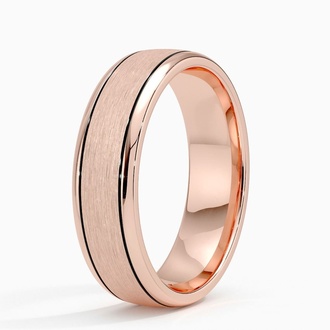Rose gold men's wedding bands are an excellent choice for those looking for a wedding ring with a delightful pop of rose-hued color. First crafted in the early 19th century, rose gold is a precious metal that is created when pure gold is mixed with other alloys like copper to create a distinctive, pinkish tone that retains all of gold's best qualities: aesthetic beauty and elegance.
Our curated collection of rose gold men's wedding bands is a diverse assortment of styles that range from classic, traditional silhouettes to modern, design-forward pieces. While some men's wedding band styles only feature plain metal, others are accented with shining diamonds or unique gemstones that provide an extra pop of color. Choose a men's rose gold wedding band that fits your personal preference and celebrates your one-of-a-kind love story.



































































